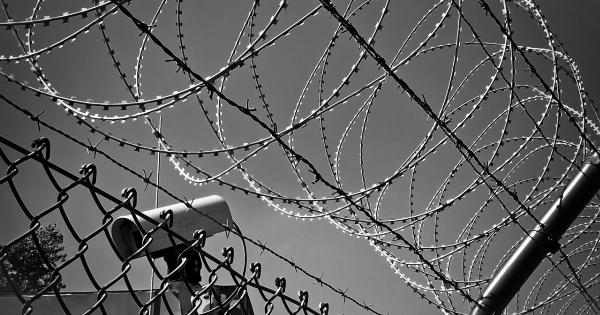A recent study conducted by researchers at the European Institute for Violence Prevention has shed light on a concerning trend – one in ten Europeans experience physical violence.
This startling revelation has raised awareness about the prevalence of violence, prompting urgent discussions about the underlying causes and potential solutions.
The Scope of the Study
The study, conducted over a period of two years, aimed to investigate the extent of physical violence experienced by individuals residing in European countries.
The research team surveyed a diverse sample of over 10,000 Europeans from various socioeconomic backgrounds, ethnicities, and age groups. The findings offer a comprehensive understanding of the issue, highlighting the need for immediate action.
Overview of Key Findings
The study revealed several important findings:.
1. 10% of Europeans have experienced physical violence at least once in their lifetime, regardless of age or gender.
2. Women are particularly vulnerable, with one in seven females reporting experiencing physical violence.
3. Young adults between the ages of 18 and 30 are at the highest risk, with rates of physical violence reaching 15% within this age group.
4. Socioeconomic factors, such as low income and education levels, contribute to higher rates of physical violence.
Causes and Contributors
A multitude of factors contribute to the prevalence of physical violence in Europe. The study identified several principal causes, including:.
1. Alcohol and substance abuse: Instances of physical violence often occur in the context of alcohol and substance abuse, leading to impaired judgment and increased aggression.
2. Historical and cultural factors: Some regions in Europe have a tumultuous history marked by conflict and violence, which can perpetuate a cycle of aggression and abusive behavior.
3. Socioeconomic disparities: Individuals facing economic hardship may resort to violence as a means of expressing frustration and exerting control.
4. Gender inequality: Gender norms and stereotypes can contribute to violence against women, perpetuating harmful power dynamics and reinforcing patriarchal structures.
Consequences of Physical Violence
The repercussions of physical violence extend far beyond the immediate trauma experienced by victims. The study highlights the long-term consequences, which include:.
1. Physical and psychological damage: Victims of physical violence often suffer from physical injuries and psychological trauma, leading to long-lasting effects on their overall well-being.
2. Relationship strain: Violence within relationships can lead to a breakdown in trust and communication, perpetuating a cycle of abuse.
3. Inter-generational impact: Children who witness or are exposed to physical violence are at an increased risk of perpetrating or experiencing violence themselves, perpetuating the cycle into future generations.
Addressing the Issue: Steps Towards Prevention
The findings of this study underscore the urgent need for preventive measures to combat physical violence in Europe. Some potential strategies include:.
1. Education and awareness campaigns: Promoting education about healthy relationships, conflict resolution, and the consequences of physical violence can help weaken its prevalence within society.
2. Strengthening legal frameworks: Stricter laws and policies to protect victims, prosecute offenders, and enforce penalties can act as a deterrent and facilitate justice.
3. Support services for victims: Expanding access to counseling, shelters, and helplines can provide vital support to individuals who have experienced physical violence.
4. Addressing socio-economic disparities: Tackling poverty, unemployment, and inequality can help alleviate some of the underlying factors contributing to physical violence.
The Way Forward
The study’s findings demand immediate attention and concerted efforts from policymakers, community leaders, and individuals alike.
By prioritizing prevention, intervention, and support, it is possible to create a Europe free from the devastating impact of physical violence.































